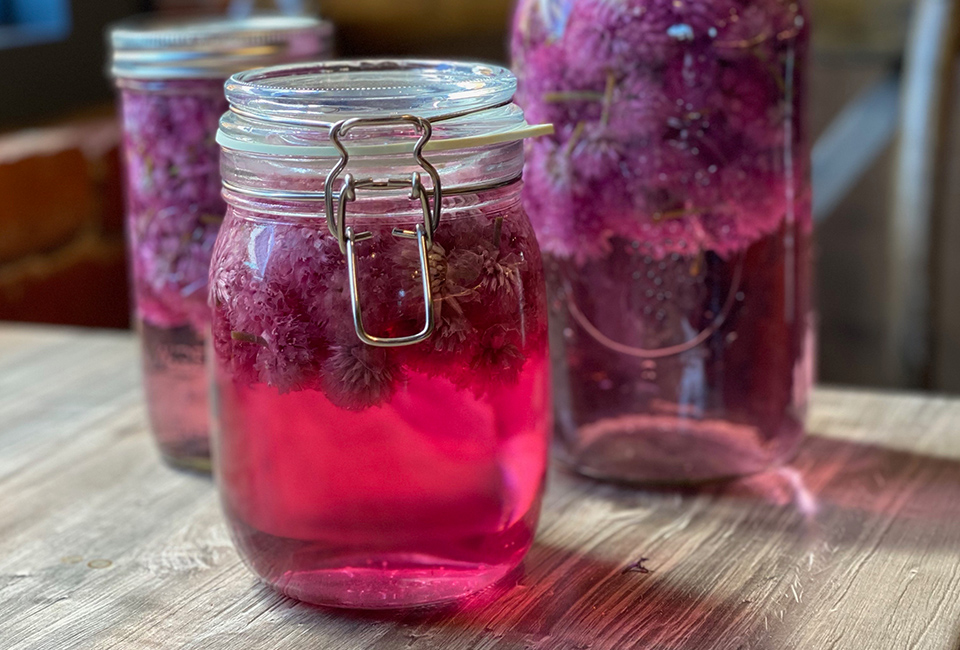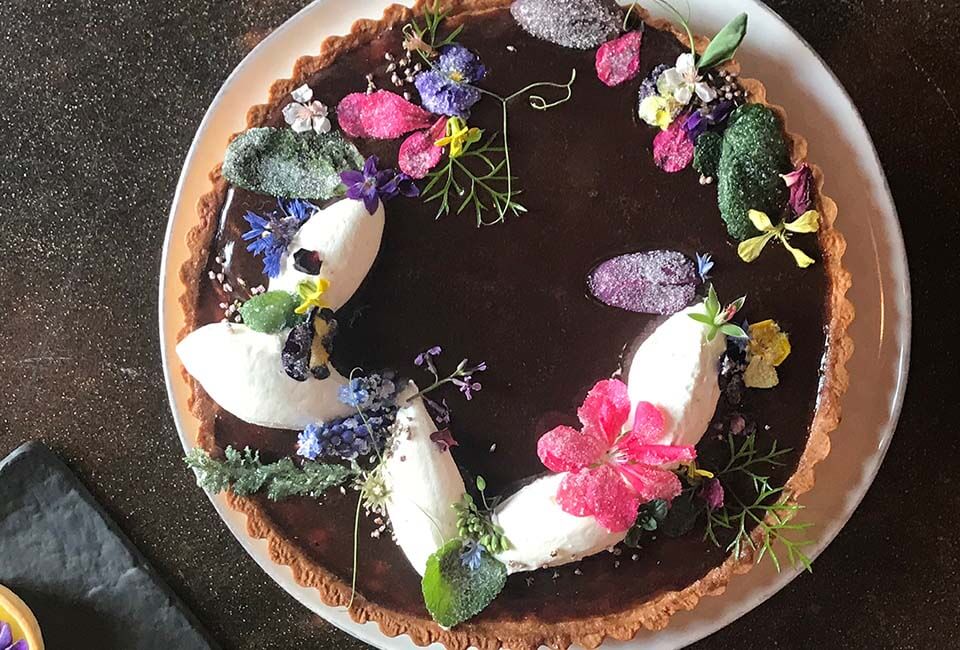Things Are Buzzing Around Here!
by Ginger Graham
We’re making fast progress with construction and renovation on Ginger and Baker’s buildings, plus we’re hiring great staff and making lots of decisions about everything from wonderful products for the market to delicious things for the menus. Plus, we’re planting our garden for fall harvest and getting the beehives up and running for summer.
We have eight hives here at Ginger and Baker and last year was a good year for honey; we harvested 235 pounds of honey, even after leaving each hive with two full boxes of food for their over-winter needs.
Winters are a challenge, though, and despite all the food in the hives, the insulation we installed around each hive for protection from the cold, and late fall feeding and mite-prevention, we still lost several hives this last winter. It seems like a regular event now, as the loss of bees is a well-documented global challenge.


This year, spring came early in Colorado, so we had to kick into gear to replenish the hives. We purchased several small packages of bees, including a new queen, to repopulate the empty hives. There is also a way to split healthy hives into two boxes and jumpstart other new hives. Our goal is to always have at least eight hives and when Ginger and Baker’s market is running full steam, we may need more!
We feed the new hives sugar-water and pollen until Mother Nature reliably provides both, and we hope the new queen is able to mate with multiple drones, preparing her for a lifetime (2-5 years) of laying about 1500 babies a day throughout the summer. When we say we are busy as bees, it means things are hopping!
Right now, the flowers and fruit trees are buzzing with bees….and we’re hoping for a big harvest this fall!


So, to celebrate spring, bees and sweet, golden honey, we’re sharing two of our favorite honey cake recipes. We adapted both recipes from the company that made our bee-inspired pans, but we’ve added a bit more honey here and upped the lemon there. These cakes bake up just as well in standard pans, the honeycomb cake in a 13×9-inch pan and the hive cake in two 8-inch layers with buttercream frosting. No matter how you make them, the taste and texture of both are definitely the bee’s knees. 🙂


Honey Lemon Cake
(adapted from NordicWare)
- 3 cups cake flour
- 1 ½ tsp. baking powder
- 1 tsp. baking soda
- ¼ tsp. salt
- 1 cup butter, softened
- 1 cup sugar
- ½ cup honey
- 4 eggs
- 3 Tbsp. lemon zest
- 1 cup plain, whole milk Greek yogurt
Glaze:
- 3 Tbsp. honey
- 2/3 cup powdered sugar
- 4 Tbsp. lemon juice
Preheat oven to 325°F. Grease and flour one 13×9-inch pan or a Nordicware honeycomb pan. In a medium bowl combine flour, baking powder, baking soda and salt. In a large bowl beat butter, sugar and honey until fluffy and light yellow, about 5 minutes. Add eggs, one at a time, blending well after each addition. Turn down mixer and add flour, lemon zest and yogurt. Mix until well combined, about 1 minute. Pour batter into prepared pan and bake for 45-55 minutes until top springs back and a tester inserted in the center of the cake comes out clean. Remove from oven, pierce top of cake several times with a fork and pour glaze over warm cake.
To make glaze, place all ingredients in a small pan and heat until sugar is dissolved.
Beehive Cake
(adapted from Nordicware)
- 2 ¾ cup flour
- 1 tsp. baking powder
- ½ tsp. salt
- 1 cup softened butter
- 1 cup sugar
- 1/2 cup honey
- 4 eggs
- 1 tsp. vanilla
- 3 Tbsp. fresh lemon juice
- ¾ cup milk
Preheat oven to 325°F. Grease and flour two 8-inch round pans or a Nordicware beehive pan.
Whisk together flour, baking powder and salt. In a separate bowl, beat butter, sugar and honey until light and fluffy, about 5 minutes. Add eggs, one at a time, beating well after each addition. Add vanilla and lemon juice. Add one-third of the flour mixture, following by half of the milk, then another third of the flour, followed by the rest of the milk and end with the remaining flour mixture. Divide batter between pans. Bake for about 50 minutes or until top(s) spring back and a tester inserted into center of cake comes out clean. Cool for 10 minutes, then invert onto cooling rack to cool completely.
Buttercream Frosting
- ½ cup (1 stick) butter, softened
- 2 cups powdered sugar
- 3 Tbsp. honey
- 1 tsp. vanilla
- 1-3 Tbsp. milk or cream
- 1 1/2 tsp. lemon zest
- 2-3 drops yellow food coloring
Beat butter, vanilla and honey until fluffy, about 2 minutes. Add powdered sugar, ½ cup at a time, beating well after each addition. Add milk or cream, a bit at a time, until you have a thick buttercream. If using the honeycomb mold, remove about half of the buttercream and use it to “glue” the two sides of the cake together. If using cake rounds, use this as filling.
Add additional milk or cream to remaining buttercream until mixture is just thin enough to “flow” down the top of the hive or the top of your cake. Add yellow food coloring. Pour yellow icing slowly down top and sides of cake, reserving about 1/4 cup for adhering bees to cake.
Decorate the cake with homemade or store-bought fondant bees. (Try here or here for store-bought bees.) To make homemade bees, you’ll need about a cup of softened fondant and paste food coloring. Tint 1/2 of the fondant black for the bees’ bodies and tint 1/4 of the remaining fondant yellow for the stripes. Roll about 1 tsp. of black fondant into an oblong for the bee’s body. Roll yellow fondant into a very thin tube with the palm of your hands then use several bits of this to create the stripes. Form wings from remaining white fondant. Adhere bees to cake with remaining buttercream.






